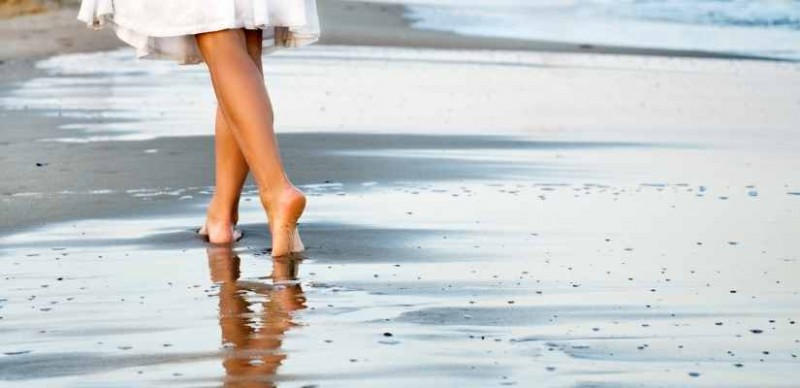by Elizabeth Hogan, SPT
Have you ever spent a summer day at the beach, walking, relaxing and building sandcastles only to be left frustrated due to foot or ankle pain? Although we might be on vacation, our feet and ankles certainly are not!
Why Is Walking On Sand Different?
When walking on sand, ground reaction forces decrease. This means that the force exerted on our bodies by the ground, starting at our feet, is less when walking on sand compared to a firm surface.
Walking on sand takes 1.6-2.5 times more mechanical work than walking on a firm surface, which in turn decreases our walking speed. Walking slower takes more energy; 2.1-2.7 times more energy than walking on a hard surface to be exact! This is due to our muscles and tendons being less efficient when we load and push off the ground.
Possible Injuries
- Posterior Tibialis Tendonitis: inflammation of the posterior tibialis tendon. Pain or discomfort at the medial (inner) ankle. Pain is made worse in weight bearing, and when plantar flexing (pointing the foot/ankle down)
- Achilles Tendonitis: inflammation of the achilles tendon. Pain or discomfort at the posterior ankle. Pain is made worse with running and jumping and when dorsiflexing (pointing the foot and ankle up)
- Plantar Fasciitis: inflammation of the plantar fascia. Pain or discomfort at the sole of the foot, under the heel. Pain is made worse in weight bearing, especially upon waking up
It’s Not All Bad!
Research suggests that due to increased work, our bodies burn more calories while walking on sand. Because it takes more work to walk on sand, it’s an opportunity to build strength. It’s also an opportunity to challenge our neuromuscular system. Because sand is uneven, the foot, ankle, and surrounding muscles need to communicate with the brain that much more to maintain our balance.
Suggestions for Walking On Sand
If you plan on going for a walk on the beach, start off wearing supportive footwear. Try walking on firm sand closer to the water, before walking on soft sand. Modify your normal exercise routine by cutting your walking time in half. For example, if you normally walk for 30 minutes, try going for a 15-minute walk instead. It is important to gradually increase your exercise distance and duration, especially in a new environment.
Whether on the sand or on the street, the experts at Capital Area Physical Therapy & Wellness can provide relief and support for foot and ankle pain at any of our NY Capital Region physical therapy offices. Call 518-289-5242 to schedule your appointment.
References
1. Dutton M. Lower leg, ankle and foot. In: Dutton’s Orthopaedic Examination, Evaluation, and Intervention. 5th ed. McGraw Hill; 2020:1080-1081.
2. Jafarnezhadgero AA, Fatollahi A, Amirzadeh N, Siahkouhian M, Granacher U. Ground reaction forces and muscle activity while walking on sand versus stable ground in individuals with pronated feet compared with healthy controls. PLoS One. 2019;14(9). doi:10.1371/journal.pone.0223219
3. Lejeune TM, Willems PA, Heglund NC. Mechanics and energetics of human locomotion on sand. J Exp Biol. 1998;201(13):2071-2080. doi:10.1242/jeb.201.13.2071






